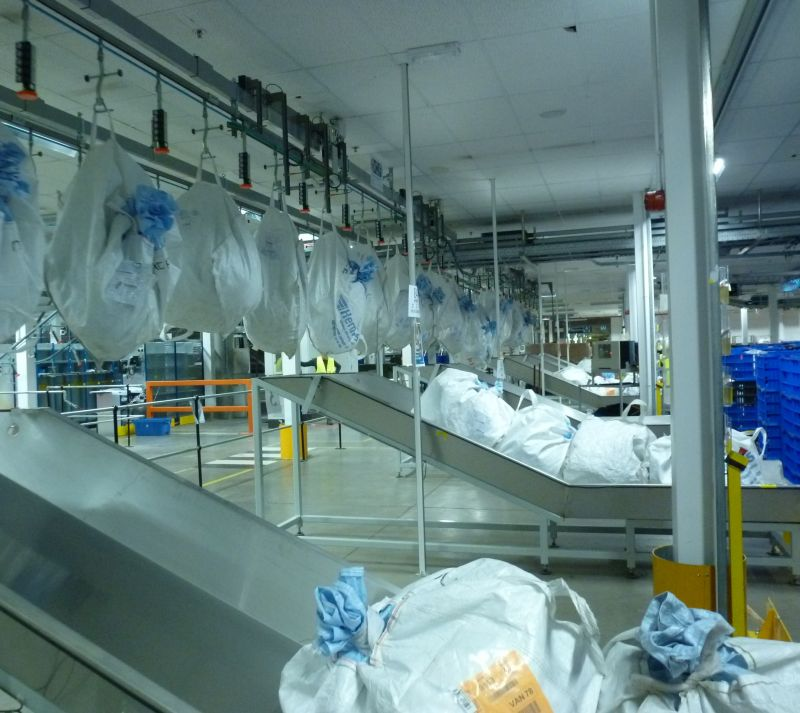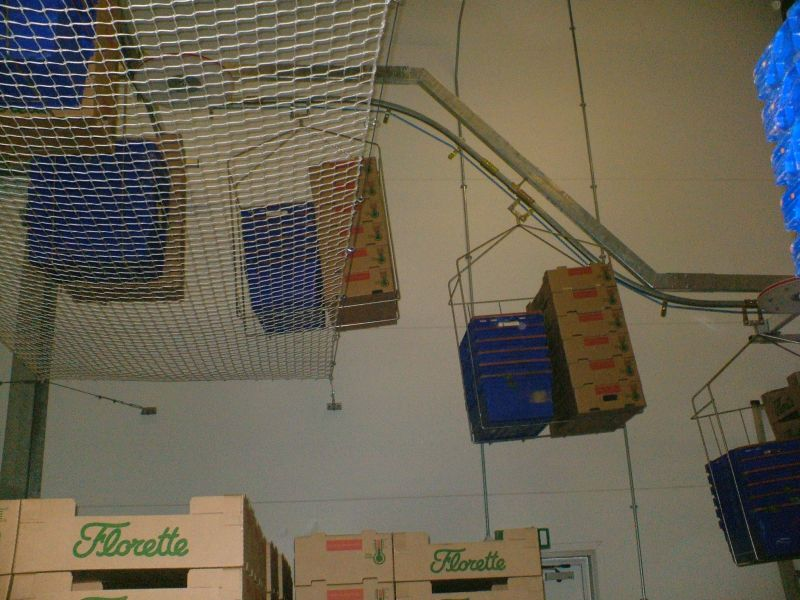 When it comes to designing conveyors for solving handling solutions, starting out with a simple concept which can be adapted to operate via more sophisticated technology, makes practical sense according to Ray Hart, Director at Rusmail conveyor systems. A prime example of this is the overhead cable conveyor.
When it comes to designing conveyors for solving handling solutions, starting out with a simple concept which can be adapted to operate via more sophisticated technology, makes practical sense according to Ray Hart, Director at Rusmail conveyor systems. A prime example of this is the overhead cable conveyor.
“Sometimes called a ‘rope’ conveyor, the ‘cable’ conveyor concept has been in existence for many years, but seems to have received little recognition in the UK, yet it has real benefits for many unit load handling applications.
“The operating principle is very simple. The nylon rope or metal cable forms a continuous loop which is driven by one or more motor/pulley combinations, depending on the conveyor route. The cable is attached to a series of trollies which run in a metal track. Carriers are attached to the trollies and the items to be conveyed are supported from the carriers. The design of carrier will depend on the type of load being conveyed. The track can be in galvanised or stainless steel construction.
 “The cable conveyor will move unit loads such as boxes, crates, bags or sacks; in fact, any item that can be easily attached directly to the conveyor using hooks, or placed in a suitable carrier attached to a hook or other suitable hanger.
“The cable conveyor will move unit loads such as boxes, crates, bags or sacks; in fact, any item that can be easily attached directly to the conveyor using hooks, or placed in a suitable carrier attached to a hook or other suitable hanger.
“The conveyor is available with a variety of pulley sizes, horizontal bends and vertical curves to match the flow path of the conveyor. It is extremely flexible and is capable of rising vertically up to 60 degrees. The number of drive motors will depend on the conveyor length and the load being carried. As an example, a recent Rusmail project included a cable conveyor 450m long and required a total installed power of only 1 Kw with a load capacity of approximately 3,500 Kg.
“The conveyor can be supported from the floor with posts and beams or hung from above from the roof structure. The conveyor weight is low at only 5 Kg/m except in the area of the drive motor and curve assemblies. One of the major benefits is the flexibility of being able to use roof space to accommodate the conveyor rather than take up valuable and useful floor space.
“The conveyor can be supplied with automatic loading and unloading devices depending on the application. It can also readily incorporate product identification and sortation as part of the control system and can be fitted with fixed speed or inverter variable speed drive(s).
“The cable conveyor is readily available in the UK and is already established with several major projects having been completed successfully. As examples, two of our recent applications have involved conveying food products in a chilled room environment, moving vegetable products in stacked cardboard boxes and plastic crates. Another involves a series of cable conveyors conveying products in sacks containing various order items, all as part of a major online retailing operation. This extensive system, close to 2 Km long, involved sack identification and sortation and automatic unloading.
“The overhead system also lends itself to smaller projects involving displaying items for public view in retail or exhibition environments. Other applications include laundries, postal/courier services, carton supply to packing stations, sandwich production, cheese production, paint shops, car seat production and removal of waste packaging materials.
“The cable conveyor is a cost-effective, flexible, low maintenance, quiet and safe method of conveying unit loads. It is well worth considering whether it is the solution to your specific handling problem.”
Enquiries can be directed to Ray Hart, B.Sc., C. Eng., M.I.Chem.E., F.I.S.M.M.
Rusmail Conveyor Systems Ltd. 33-35 Adams Street, Nechells, Birmingham B7 4LT. Telephone 0121 359 1549 info@rusmailconveyors.co.uk.



